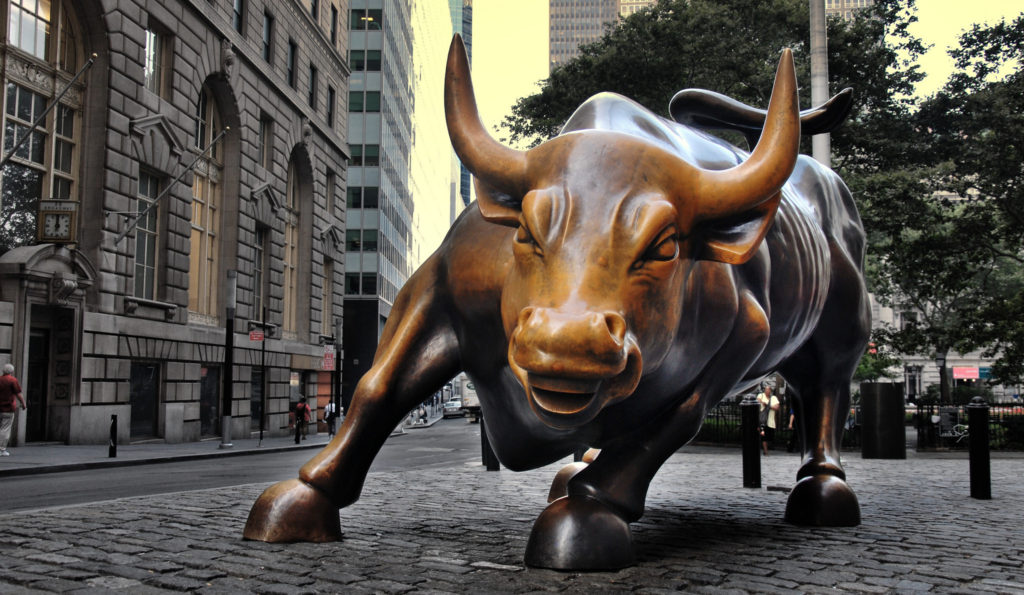The Dow Jones Industrial Average (DJIA), also known as Dow, rocketed to 26,000 amid its record-breaking run just over one year after President Donald Trump took office. Since President Trump was elected, the Dow has hit over 70 record highs, but now, the time it took to reach 26,000 from 25,000 was just seven days. On Tuesday, the Dow reached the market milestone just after the opening bell at 9:30 a.m., marking the fastest-ever rise between two 1,000-point barriers in the 121-year life of the market. Although massive economic booms are showing the U.S. economy is strong, some economists are now warning of a “melt-up.”
Since the presidential election, the Dow has peaked 8,000 points, or around 42 percent. Apart from an eight-day market slump in March, the U.S. stock market has not faltered during the Trump-era. The bullish market boom is indicative of the widespread elation on Wall Street as investors are feverishly trying not to miss out on record corporate profits, new market investments, and vigorous economic growth, cited heavily by the recent Republican tax overhaul.
Most notably, the Tax Cut and Jobs Act, signed by President Trump, cut the corporate tax rate to 21 percent from 35 percent. Moreover, the bill lowers the tax burden on pass-through business, which are businesses that do not not pay corporate income tax, and include entities like sole proprietorships, partnerships, and S-corporations. 95 percent of companies in the U.S. are classified under this category, according to the Brookings Institute. Furthermore, companies now also enjoy a greater surplus of private activity bonds, a funding mechanism used to finance infrastructure and other capital projects, such as railway corporations.
Corporate banks and retailers, as well as the technology industry, have been the biggest victors from the tax overhaul. In a report from CNN, commerce giant Amazon (AMZN) has spiked 66 percent, the entertainment streaming service Netflix (NFLX) has lofted 78 percent, and tech company Nvidia (NVDA) has skyrocketed 218 percent. Bank of America (BAC) has enjoyed a massive 83 increase and Best Buy (BBY) has gained 93 percent.
1,000-point market milestones are coming easier than they were when the Dow was at 10,000 going on 11,000. The ferocious economic surge is now raising concerns among economists that the upward momentum may be uncontrollable. While there was an economic meltdown 10 years ago, Americans may be witnessing what is now being referred to as a melt-up.
“As the stock market continues to soar, it is attracting more money into stocks. That’s what usually happens during [a] melt-up. I think the market may be in the early stages of a melt-up,” explained Ed Yardeni, president of investment advisory Yardeni Research. Yardeni told investors on Tuesday, as the Dow hit 26,000, that more and investors are participating in the massive economic upturn and are seemingly afraid not to join in.
One of his targets for defining the current market explosion is Standard & Poor’s 500 Index (S&P 500) reaching 3,100 by the end of the year. This would mean the S&P 500 will have increased by 51.7 percent over the past three years. Yardeni claims that such a big market boom can be cited further by the exuberance Wall Street investors now have for, “stocks reflected in equity fund inflows supported by the exuberance of industry analysts about the outlook for S&P 500 revenues and earnings.” However, he also cites a bit of worry when it comes to rapid growth. “I’m not a big fan of melt-ups,” Yardeni wrote. “They tend to be followed by meltdowns.”
Historically, bull markets typically end on a very strong note. Since the end of the Great Recession, which most economists claim was early 2010, the U.S economy has been on an eight-year-long recovery, just 18 months short of the longest recovery on record, March 1991 to March 2001. From its bear market low, the S&P 500 has quadrupled, gaining furiously since the election of President Trump.
In a report by Nasdaq, Jeremy Grantham, co-founder of GMO Capital, said, “no bubble can break without signs of real excess.” He also uses Nobel Prize-winning economist Robert Shiller’s perspective to comment about the potential melt-up by stating, “not nearly enough signs of euphoria were yet present to make this look like a late-stage bubble.” Grantham suggests that the stock market more than likely has a lot more gains to be made.

